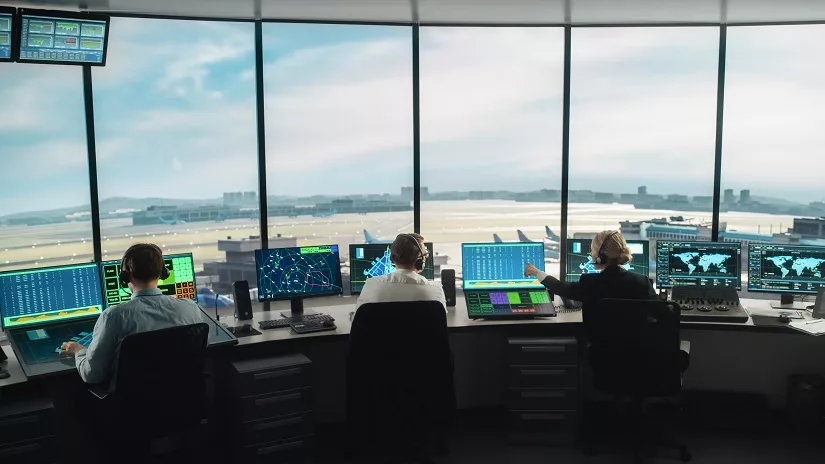
The role that air traffic engineers play in the aviation industry and the safe transportation of millions of people is seldom recognised by the average air traveller. Safety is something expected and taken for granted. Our training of 57 aspiring air traffic engineers for Kuwait International Airport emphasises the critical nature of this work.
Training: Safety for passengers
Undergoing this specialist training at Deerns’ ATSEP training facility in Kuwait of these engineers covers communications, navigation, surveillance and air traffic management from an engineering perspective. This training is specific to the new Terminal 2 for Kuwait International Airport. As the airport nears completion, the classroom will become secondary to the process of commissioning and operating equipment.
A range of airport specific systems in and around this new 550,000m² terminal sets new standards of quality and passenger experience. Deerns’ design, installation and commissioning of sophisticated mechanical, electronic and digital equipment requires specialised knowledge and skills to operate and maintain.
The communications, navigation, surveillance and air traffic management systems housed in these facilities integrate complex and innovative solutions that must be operated and overseen by qualified personnel. Though founded on trusted technology, these systems are frequently integrated in new and innovative ways for which specialist personnel must be trained.
Changing Face of Air Traffic Engineering
Air Traffic Safety Electronics Personnel (ATSEP) or air traffic engineers, ensure that all CNS/ATM/ANS (Communications, Navigation & Surveillance/Air Traffic Management/Air Navigation Services) systems always function correctly to provide accurate and precise information to air traffic control officers and pilots. It is critical work requiring the highest standards of operational readiness and commitment – and best practice training programmes to produce such professionals.
Upcoming changes in concepts and technologies and the associated changes in CNS/ATM/ANS services mean that we must work towards high standards of professionalism and knowledge to empower our teams. These changes include:
- Space-based CNS provision
- Virtual Centres
- Remote Towers
- Cybersecurity
We recently completed the communications module with a 91% pass rate that demonstrates an impressive degree of student commitment and motivation. This is both encouraging and rewarding. Deerns will continue its training programmes until the contract is completed at which point the airport administrators will have a highly competent and well-motivated cohort of air traffic engineers.
A Collaborative Approach
Deerns’ work on the new terminal is carried out from our local office in Kuwait with specialist support from our offices in Europe together with local expertise and logistical support from Al-Nabhan Engineering Consultancy. For the development of specialised communication, navigation and surveillance systems as well as meteorological systems for air traffic management, Deerns is collaborating with the Netherlands Aerospace Centre (NLR).
Deerns will continue its training programmes until the contract is completed at which point the airport administrators will have a highly competent and well-motivated cohort of air traffic engineers.
The students arrive with different levels of education and experience: some are fresh out of university, and some have been in the industry for many years. The training starts with a comprehensive theoretical background in small classes that encourage interaction and engagement. This is followed by onsite visits to the equipment supplier’s factories, together with site visits during the installation process and hands on experience during equipment commissioning.
